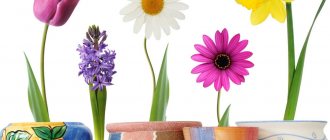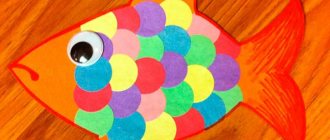Training: “Psychological health of a teacher.”
Training: Psychological health of a teacher. Target:
prevention of emotional burnout, training in self-regulation and relaxation skills, formation of a positive emotional state, prevention of neuroses.
Tasks:
- Formation of a positive emotional state through positive speaking.
- Prevention of emotional burnout through relaxation and self-regulation.
- Prevention of neuroses through positive positive communication experiences.
- Teaching methods of health-saving technologies.
- Introduction to the ideology of positive pedagogy.
The profession of a teacher (in other words, the work of the heart and nerves) requires daily, hourly expenditure of mental strength and energy.
.
Research has found that representatives of these professions are susceptible to symptoms of gradual emotional fatigue and devastation - burnout syndrome.
Warm-up
Exercise 1
"Intonation" Purpose:
development of expression, active listening skills, emotional sphere. Presenter: “Say your name in a circle with different intonations”
with gratitude, with delight, with admiration, sincerely, joyfully, kindly, affectionately, enthusiastically, tenderly, loudly, quietly, thoughtfully.
Exercise 2
"Walnut"
Target:
Attune participants to the tone of the training, create an atmosphere of value-based attitude towards the topic, talk about personality traits. To carry out this exercise, the presenter (educator-psychologist) pours walnuts out of a bag in the center of the circle and asks everyone to take one for themselves. For some time, participants are asked to carefully examine their nut, study its structure, structural features, and try to remember all its individual features. The nuts are then put back into the bag and poured out again in the center of the circle. The task of each participant is to find his own nut.
Exercise 3
"Associations with a toy"
Target:
finding positive meaning in unexpected things.
Progress of the exercise.
Teachers are offered a black, opaque bag with soft toys. The leader in the circle suggests touching any toy and thinking about how this toy is similar to him.
Next comes a discussion in a circle.
Exercise 4
"Brownian motion"
Target:
reduction of muscle tension and internal tightness.
Progress of the exercise.
Participants are encouraged to actively move around the room to the music. As soon as the music turns off, the presenter calls a number, the participants should hold hands and unite into groups consisting of that number of people.
The presenter suggests joining groups not by the number of people, but by some characteristic (for example,
by eye color, items of clothing, pets, etc.).
The task is more fun if the participants are also
prohibited from talking.
Exercise 5
"My favorite quality"
Target:
diagnostics of the group’s condition at the start of the training.
Progress of the exercise.
Teachers are asked to divide into pairs and sit opposite each other. The presenter reads out three positive qualities in turn. In pairs, it is necessary to discuss which of the listed qualities best suits each of the couple and why. The circle discusses which pairs have the same qualities.
- wisdom, reliability, perseverance;
- activity, selflessness, politeness;
- willpower, modesty, courage;
- equanimity, charm, sociability.
Exercise 6
"Distribute in order"
Goal: to convey to training participants the importance of the ability to switch social roles to maintain mental health and creative activity; awareness of one's "I". Teachers are asked to rank in order (according to the degree of importance, in their opinion) the following list : - children - work - husband (wife) - Me - friends, relatives
After some time, propose an option for the optimal distribution of the list:
1. Me 2. Husband (wife) 3. Children 4. Work 5. Friends, relatives
Then participants are asked to reflect on the results obtained.
One of the common stereotypes of everyday mental hygiene is the idea that the best way to relax and recover is through our hobbies, favorite activities, and hobbies. Their number is usually limited, since most people have no more than 1-2 hobbies. Many of these activities require special conditions, time or the state of the person himself. However, there are many other opportunities to relax and recuperate. Exercise 7 “Pleasure”
Training participants are given sheets of paper and asked to write down 10 types of daily activities that bring them pleasure.
Then it is proposed to rank them according to the degree of pleasure. Then explain to teachers that this is a resource that can be used as an “ambulance” to restore strength. Exercise 8 “Source”
All participants are asked to sit comfortably, relax, and close their eyes. To the soundtrack “Water” (a collection of melodies for relaxation), the presenter calmly and clearly pronounces the text:
“Imagine that you are walking along a path in the forest, enjoying the singing of birds. Through the birdsong, your ears are attracted to the sound of flowing water. You follow this sound and come out to a source gushing out of a granite rock. You see how its clear water sparkles in the rays of the sun, hear its splash in the surrounding silence. You get the feeling of this special place, where everything is much cleaner and clearer than usual.
Start drinking water, feeling how its beneficial energy penetrates you, enlightening your senses.
Now stand under the source and let the water flow over you. Imagine that it is able to flow through every cell of yours. Imagine also that it flows through the countless shades of your feelings and emotions, that it flows through your intellect.
Feel that the water is washing away from you all the psychological debris that inevitably accumulates day after day - disappointments, grief, worries, all kinds of thoughts.
Gradually you feel how the purity of this source becomes your purity, and its energy becomes your energy.
Finally, imagine that you are this source in which everything is possible, and whose life is constantly renewed.”
At the end of the exercise, participants are asked to gradually open their eyes. It is recommended to use this exercise while taking a shower.
Start recovering now, don’t put it off until later!
A companion to stress is muscle tension. Exercise.
Stand up straight with your arms hanging freely along your body.
Imagine that there is a thread attached to your crown, by which you are not strongly, but confidently being pulled upward. Allow your head to follow the direction of the pulling force. Stretch your neck little by little. Then begin to lengthen your spine. When you feel that your spine has straightened, stand on your tiptoes. Exercise.
Goal: relief of psychomuscular tension in the shoulder girdle and back. It is important to control your posture and self-confidence. • Time required: 3 sec. Presenter: The exercise is performed standing, or on the go. Raise your shoulders as sharply as possible, spread them wide back and lower. This should be your posture all the time. Exercises to relieve mental stress
The exercise is performed while sitting. It is advisable to sit on a chair with a hard back. Keep your back straight, neck muscles relaxed. For better relaxation, keep your eyes closed.
- We raise our hands. We place our fingers on the temples and find a small depression approximately in the middle of the temple. This is the right point. When pressing on it, pain is felt.
- Massaging is done with the index finger, on which the middle finger is pressed. Massaging is done in a circular motion (it is better if you massage both temples simultaneously). Make 20 circular movements towards the face and 20 movements towards the back of the head. We repeat two more times.
— Completing the exercise, we reduce the pressure, gradually moving on to stroking. Having completed the exercise, take 3 deep breaths and exhales.
Exercise to prepare for hard work.
Minute ear massage: gently turn your ears three times from bottom to top. Do the exercise when you are distracted. Rub your ears thoroughly - first only the lobes, and then the entire ear with your palms: up - down, forward - back, while clicking your tongue for 15-20 seconds.
"Head rolls."
After performing this exercise, your voice begins to sound much louder. Tilt your head forward and slowly roll it from one shoulder to the other. Lowering your shoulders, repeat the same. Tilt your head back and roll again.
Sound gymnastics.
Sound gymnastics works on the principle of vibration massage with training of the respiratory muscles and diaphragm. Different sounds generate different vibrations, which in turn affect our well-being in different ways.
The sound “A” makes the chest vibrate and activates the entire sound spectrum in the body, giving the command to all its cells to tune in to work.
The sound “N” makes the brain vibrate, activates its right half and treats brain diseases, as well as improves intuition and develops creativity.
The sound “B” corrects problems in the nervous system.
The sound “E” creates a barrier around a person to protect against energy-informational pollution.
“R” sounds help relieve stress, fears, and stuttering.
The sounds “T” cleanse the soul of heaviness and strengthen the cardiovascular system.
A special feature of the technique is breathing: inhale through the nose - pause, actively exhale through the mouth - pause. The duration of exhalation should be twice as long as inhalation.
Recommendations.
1. Learn, if possible, to immediately dump negative emotions, and not displace them into psychosomatics. How this can be done at work: - sing loudly; - stand up quickly and walk around; - quickly and sharply write or draw something on a board or piece of paper; - scribble a piece of paper, crumple it and throw it away. 2. If you have sleep disorders, try to read poetry rather than prose at night. According to scientific research, poetry and prose differ in energy; poetry is closer to the rhythm of the human body and has a calming effect. 3. Every evening, be sure to get into the shower and, reciting the events of the past day, “wash” them off, since water has long been a powerful energy conductor.
Conclusions: • Take care of your mental health, colleagues. • Do not bring the level of mental stress to critical levels. • Do not forget that not only your wards, but also you yourself need help, care and attention to protect and preserve your psychological health.
Success in life does not come without difficulty, sometimes without heavy losses. You must be prepared to go through insults, failures, and losses with the least suffering. To do this, you should train yourself not to let into the sphere of emotions excessive irritants that bring pain and denial of many human values.
And finally... Be attentive to yourself: this will help you notice the first symptoms of fatigue. Love yourself, or at least try to like yourself. Love life, and it will definitely answer you in kind!
May your wildest dreams and most unrealistic desires come true! Let the pages of the calendar change, leaving the bright events of the year in your memory! All the best to you... Thank you for your attention
| NATURAL WAYS TO REGULATE THE BODY • The main secret is smile, laughter, humor!! Start your day with laughter and a smile. When you wake up, make faces and giggle in front of the mirror. Smile at your reflection, your loved ones and the new day. • Take action! • Clean up your home or work place. Create order out of chaos. Organize your home and workspace so that you can always find the things you're looking for. Place them where they need to be, and you won’t have to panic and search for the thing you need and be stressed. • Take a walk. • Go shopping. • Hit a ball or pillow. • Take a break! A walk in nature, in the fresh air, brings many benefits. Communicate more often with nature and animals. • Do something for your appearance. If you look better, it will make you feel better. A fashionable hairstyle or a new suit can give you the vitality you need. • When leaving work, leave thoughts about it for tomorrow. • Do not forget that massage, bath, sauna are excellent means for relaxation and rest. • Get creative! Any creative activity can heal from worries: Draw, Sing, Sew, Sculpt, Design, Cook new dishes, etc. • Movement, dancing, music – this is LIFE! • Natural ways of regulating the body also include tasty and healthy foods, fruits and fruit juices. |







